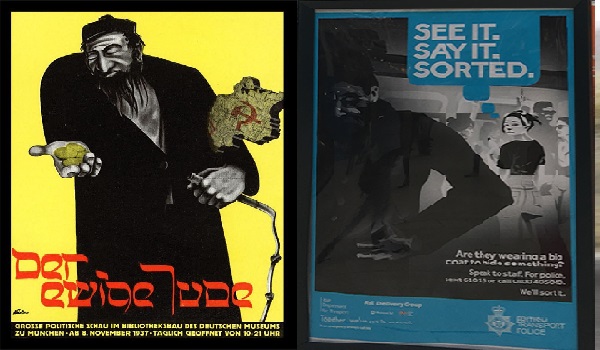BTP withdraws `anti semitic` posters
Anti-terrorism posters created by the British Transport Police (BTP) have been taken down following comparisons to Nazi propaganda.
Anti-terrorism posters created by the British Transport Police (BTP) have been taken down following comparisons to Nazi propaganda.
The See it. Say it. Sorted campaign, which launched last week, aims to encourage people to report suspicious behaviour on trains.
However, it has drawn criticism from commuters likening images in posters with those used in Nazi Germany in 1937, leading to a steep rise in anti-semitic feelings.
The poster shows a man with dark skin, a large nose and a beard in the foreground with a woman behind him, captioned: See it. Say it. Sorted. Are they wearing a big coat to hide something?
Members of the public compared the BTP campaign to a Nazi propaganda poster depicting a Jewish man wearing a large coat, with similar facial features and a long beard, holding coins in his hand.
The Advertising Standards Authority said it had received 13 complaints by Tuesday evening (November 8) about the posters.
In response to the criticism, the BTP said the images were carefully designed to avoid any stereotypes with the intention to show specific examples of what people should look out for.
The posters have since been removed after the BTP admitted they had caused upset.
Assistant Chief Constable Alun Thomas said: “The images on each of the posters in this campaign were specially created in order to avoid using photographs of any specific individuals or groups.
“However, we are aware that one particular image has caused considerable distress due to its similarities with offensive historic propaganda. It is highly regrettable that this image, and its connotations, were overlooked during the development of this campaign.
“We recognise and understand the upset that has been caused by this. We and our campaign partners have listened to the feedback we have received and this poster has now been withdrawn.”
He added: “There are clearly lessons for us to learn with regards to quality assurance and better audience research in any future campaigns.”


